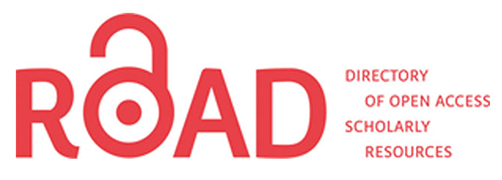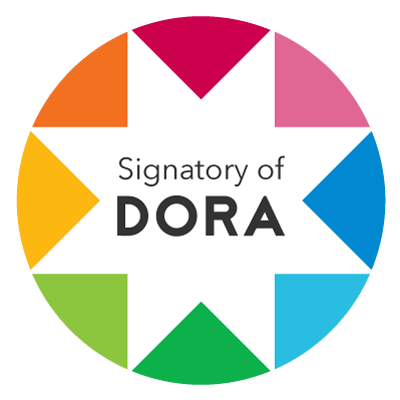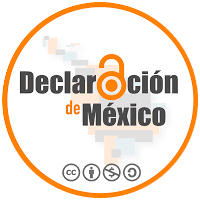Bioart in Argentina
Point of Contact Among Art, Nature and Technology
DOI:
https://doi.org/10.24215/24691488e073Keywords:
Bioart, Argentine art, technology, nature, decolonialAbstract
La era geológica actual, conocida como Antropoceno, se caracteriza por el impacto del ser humano en el ecosistema que provoca desigualdades estructurales, crisis medioambiental y modelos de economía lineal no sustentables. Con el fin de reflexionar sobre este sistema/mundo determinado por el capitalismo y la racionalidad tecnocientífica, se propone realizar una articulación entre una serie de casos de bioarte argentino y las concepciones filosóficas de la estética decolonial, el poshumanismo y la ecosofía, a fin de establecer una mirada crítica respecto de las transformaciones que conciernen a la naturaleza.Downloads
References
Ana Laura Cantera. (s. f.). Displaced. Recuperado de https://www.analauracantera.com.ar/displaced
Barriendos, J. (2011). La colonialidad del ver. Hacia un nuevo diálogo visual interepistémico. Nómadas, (35), 13-29. Recuperado de http://www.redalyc.org/articulo.oa?id=105122653002
Braidotti, R. (2015). Lo Posthumano. Barcelona, España: Gedisa.
Cantera, A. L. (2020-2021). Inhalaciones territoriales (work in progress) [Acción en espacio público]. Recuperado de https://www.analauracantera.com.ar/inhalaciones
Cantera, A. L. y Ferrari, D. (2018). Cartografías invisibles [Robot híbrido]. Recuperado de https://www.analauracantera.com.ar/cartografias-invisibles
Cantera, A. L. y Ferrari, D. (2019). Displaced. [Instalación robótica]. Recuperado de https://www.analauracantera.com.ar/displaced
Colectivo Electrobiota (2014). Eisenia, máquina de impresión orgánica [Maquinaria híbrida de bioimpresión]. Recuperado de https://www.gabrielamunguia.com/artes/ eisenia-maquina-impresion-organica/
Colectivo Electrobiota. (2016). Rizosfera FM [Instalación sonora e intervención sitio específico]. Recuperado de https://www.gabrielamunguia.com/artes/rizosferafm/#:~:text=Rizosfera%20FM%20es%20una%20investigaci%C3%B3n,e%20interdependientes%20con%20otras%20especies
Gen.BA. (s. f.). Ana Paula Hall. Recuperado de http://gen-ba.org/ana-paula-hall
Gómez, P. P. y Mignolo, W. D. (2012). Estéticas decoloniales. Bogotá, Colombia: Universidad Distrital Francisco José de Caldas.
Guattari, F. (1990). Las tres ecologías. Valencia, España: Pre-Textos.
López del Rincón, D. (2017). Posnaturaleza. El bioarte o el arte de desnaturalizar. En D. López del Rincón y L. Manonelles (Eds.), Arte, naturaleza y política en la creación contemporánea (pp. 11-30). Barcelona, España: Edicions de la Universitat de Barcelona.
López del Rincón, D. (2018). Postnaturaleza. Vitoria-Gasteiz, España: Sans Soleil.
Sánchez, M. (16 de noviembre de 2019). Es científica y desarrolla un material sustentable para crear prendas con yerba mate. Infobae. Recuperado de https://www.infobae.com/tendencias/2019/11/16/es-cientifica-y-desarrolla-un-material-sustentable-paracrear-prendas-con-yerba-mate/
TEDx Talks. (16 de enero de 2019). Biotextiles, diseño y otras yerbas | Verónica Bergottini & Silvio Tinello | TEDxRiodelaPlata [Archivo de video]. Disponible en https://www.youtube.com/watch?v=dJOsGGi87QU
Yeregui, M. (2017). Prácticas co-creativas. Decolonizar la naturaleza. Artelogie, (11), 1-13. https://doi.org/10.4000/artelogie.1601
Downloads
Published
How to Cite
Issue
Section
License
The acceptance of the manuscript by the magazine means the non-exclusive cession of the property rights of the authors in favour of the editor, who allows the reuse, after publication (post print), under a license Attribution-NonCommercial-NoDerivatives 4.0 International. According to these terms, the material can be copied and redistributed by any means or in any format as long as a) the author and original source of the publication are quoted (magazine and URL of the work), access to the license is provided and whether changes have been made is mentioned; and b) the material is not used for commercial purposes.
The cession of non-exclusive rights means that after the publication (post print) in Arte e Investigación the authors can publish their work in any language, means and format; in such cases it must be mentioned that the material was originally published in this magazine. Such cession also means the authorization of the authors for the work to be collected by SEDICI, the institutional archive of the National University of La Plata, and to be spread in the databases that the editorial team considers appropriate to increase the visibility of the publication and its authors.
Moreover, the magazine encourages the authors to deposit their productions in other institutional and thematic archives under the principle that offering the society the scientific and academic production without any restrictions contributes to a greater exchange of the global knowledge.


































